The beginning of the era of steam and armor
LAST WAR OF THE SAILING Fleet
For several thousand years, mankind waged wars at sea. In the history of wars, fierce sea battles, bloody dramas, tragedies and triumphs have remained. Their history is inextricably linked with the search for the most effective means and methods for the destruction of enemy ships. Continuously developed tactics and battlefield strategy at sea. At first, the sailors invented a ram and boarding, they began to use catapults and other throwing machines. A little later, the raven and the Greek fire were invented and put into practice. Ship hulls were built of wood, oars were used as a mover in those early times, the sail played only a supporting role. But gradually the size of the ships grew, and the sailors were forced to improve the sailing armament and its management. This allowed to gradually abandon the oars. In the XIV century. on ships began to place artillery. At first there were few guns on the ships, but gradually their number grew. The final rejection of oars on large ships made it possible to increase the number of guns tenfold. Now they were placed on the battery decks. Tactics also changed - large ships lined up in the wake line, and in the course of the battle brought down on the enemy all the power of their numerous artillery. So in the XVII century. battleships appeared - the most powerful and well-armed sailboats, the real "kings of the seas." For several centuries, the size of battleships grew, their design was improved, they received more and more guns (100, 120 and even more), which were placed on several battery decks. But they still used sail as their main mover. This continued until the middle of the XIX century.
The main revolutionary innovation that came to the fleet in the first half of the nineteenth century. It was used as a steam engine engine. The first small ships appeared in the navy, they played a supporting role. The use of the steam engine allowed the ships not to depend on the wind and increased their speed, and this radically changed the tactics of naval combat. But the first steam engines were low-powered and were used on ships as an auxiliary power unit that rotated the propeller wheels or propeller. Gradually, the power of cars grew, and they began to install even on the huge sailing battleships, which continued to be the main force of the fleets. In 1822, the French artillery officer, Henri-Joseph Peksan, invented a new type of gun, and in 1824, he demonstrated his invention - a cannon that fired explosive bombs. They were hollow shells, filled with gunpowder, which exploded with a remote explosive tube and caused tremendous destruction, and a fire started on the sailboat. On trial, with just a few shots, the decommissioned sailing battleship was destroyed. After such a triumph, the leading fleets of the world began to re-equip their ships with bombing tools. The Russian fleet, which received similar guns in 1838, did not stand aside either. The Commander of the Black Sea Fleet, Admiral MP, insisted on this. Lazarev. He managed to get them into service, despite the refusal of the Main Naval Staff to allocate funds for testing. The first were armed steamer "Jazon" and "Kolkhida". Thanks to Lazarev's perseverance, the Black Sea sailing battleships received these guns. In October, 1853 on the Black Sea, the fighting begins. The Crimean (Eastern) War began (1853 — 1856). Russian squadron under the command of Vice-Admiral P.S. Nakhimov immediately went to sea and began to search for the enemy. It was found on the roadstead of the fortress of Sinop - here the Turkish squadron of Vice-Admiral Osman-Pasha was under cover of the coastal batteries. Under his command were 12 ships with 476 guns - 7 frigates, 3 corvette and 2 steam frigate. Under the flag of Nakhimov were 11 ships with 734 guns - 6 battleships, 2 frigate and 3 steamer frigate (the latter did not have time to arrive at the beginning of the battle). Nakhimov decided to attack the enemy and on November 18 entered Sinop Bay. Within a few hours a fierce battle took place, during which the Turkish squadron was completely destroyed, only one steam-frigate fled. Russian sailors showed their tactical superiority, best training and unparalleled courage. Bombing guns played the role, which burned all Turkish ships. Damaged Russian battleships were brought to Sevastopol by steam-frigates. This was the last in the history of the battle of sailing squadrons. He showed a huge destructive effect from the fire of bombing guns and the sailors began to look for ways to protect the ships.
In the Crimean War, Russian steamer frigates took the most active part. A few days before the defeat of the Turks at Sinop on the Black Sea, the first in the history of the battle of steam fighters took place. On November 5 the steam-frigate "Vladimir" under the flag of Vice-Admiral V.A. Kornilov met the Turkish Pervaz-Bahri. Commander "Vladimir" captain-lieutenant G.I. Butakov decided to attack the enemy. The Turk maneuvered and fired back, but Butakov passed over the enemy's stern, where he had no guns and put his nose bomb bombers into action. They caused great damage to the enemy ship. The Turks desperately resisted, but they suffered heavy losses, their fire gradually weakened. Then "Vladimir" went to a rapprochement and opened fire with a canister. After a three-hour battle, Pervaz-Bahri lowered the flag. Here is what happened on the captured steamship: “Those who were sent to seize the prize found a terrible picture of destruction and ruin on it: fragments of hand wheels, compasses, hatches, broken gear, mixed with weapons corpses, wounded, blood, coal ... Not a single bulkhead that would be intact. Boca shrouded booths. Steam and chimney like a sieve. " The ship was brought to Sevastopol, repaired, renamed “Kornilov” and incorporated into the Black Sea Fleet. G.I. Butakov was awarded the Order of George of the 4 degree and the stag of the captain of the 2 rank. He began to develop tactics of combat use of steamboats.
SHIPS DRESS ARMOR
D Not only the Russian and Ottoman empires were involved in the Crimean War, but also England, France and Sardinia, which were on the side of Turkey. The Allies introduced their fleets into the Black Sea and landed troops in the Evpatoria area. Their goal was to seize Sevastopol and destroy the Black Sea Fleet. The ships of the Black Sea fleets were scuttled, the sailors fought on the shore. Only steamer-frigates continued to take an active part in the defense of the main base of the Black Sea Fleet, which lasted 11 months, but the forces were unequal and the city had to be abandoned. And the war continued. The allies were the first to use armored ships - French armored steam floating batteries "Lave", "Tonnant" and "Devastason". They were built on the orders of the emperor Napoleon III, who was persuaded to start the construction of the main shipbuilder of the fleet Dupuy de Lom. These were clumsy wooden ships armed with 18x240-mm cannons. Their freeboard was sheathed with iron sheets of thickness 120-mm. They were set in motion by a steam engine and a propeller. Their debut took place on 17 on October 1855 in the assault of Keeneburn. A squadron of allies attacked the Russian fortifications on the Danube River. The cannonade lasted for three hours, the Russian batteries were destroyed and surrendered. Our gunners fired well - “Lave” and “Tonnan” got 60 hits, and “Devastasion” whole 75! But in no case were the iron plates punched. This fight was a real triumph of armor over the projectile. Admiral Brue wrote in a report about this fight: "All success can be expected in the future from these amazing machines of war."
Soon in all the fleets, in addition to the armored batteries, they began the construction of seafaring battleships. The legislators of fashion were again the French. They built the first in the world navigable battleship Gluar, which was launched in 1859. It was almost invulnerable to naval smoothbore guns - when the 5530 was displaced, it was covered with 119 mm thick armored plates, the 36 162-mm weapons were armed. The British made their debut with the battleship Warrior, which was launched in 1860. It was built entirely of iron, it was larger in displacement and size than the Gluard, better armored and armed. With a displacement of 9094 t. It housed two 203-mm and 28 178-mm guns, the thickness of the armor was 114 mm, but it consisted of several iron sheets heated in furnaces to the welding heat and forged with steam hammers. This improved the strength of armor plates. Every year all new battery battleships came into operation, their design was constantly improved, but in fact it was the same battleships in the iron version. In 1865, the British launched the world's first casemate battleship Bellerophon, which carried 7550 10-mm and 229 4-mm guns at 178 displacement. The main caliber was in a casemate behind 203-mm armor, the rest of the body was covered with 152-mm plates. Now in all countries began to build casemate battleships. After some time, the citadel armadillos appeared, and a little later the parapet.
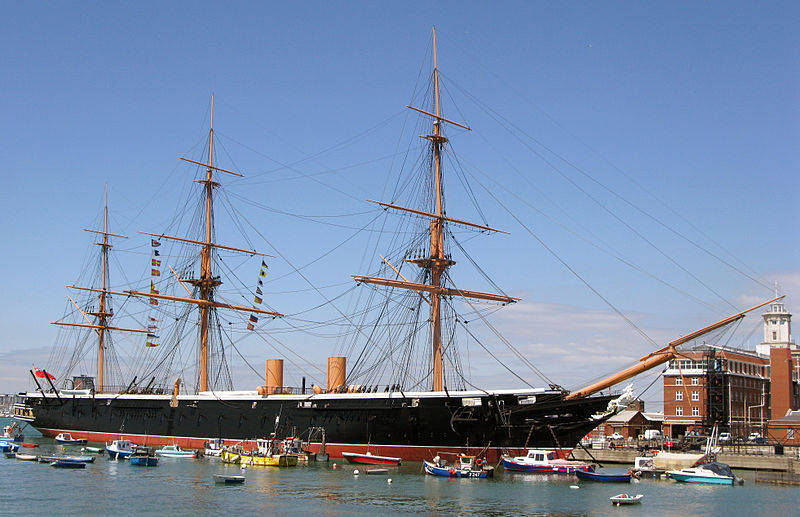
Otherwise, the situation developed in the United States. In 1861, the civil war between the northern and southern states begins. The southerners did not have a fleet, but they tried to win supremacy on the sea with the help of battleships. The first of these was the "Virginia", which was rebuilt from the frigate "Merrimak". He cut off the entire freeboard and in its place was placed a rectangular casemate with inclined walls that covered two intersecting layers of 51-mm iron bands. Ten guns were installed in the casemate (6 229-mm smooth-bore, 2 178-mm and 2 152-mm - rifled), and a ram was placed in the bow of the battleship. 8 March 1862. The work on the Virginia was completed and she left Norfolk for the Hampton raid. Here was part of the fleet of northerners who blocked the port. The whole day she smashed the ships of the northerners with impunity: first, the Cumberland sloop and the Congress frigate sank, the Minnesota frigate damaged. Only the sunset stopped the carnage. And in the morning of March 9, a new enemy appeared at the battleship of the Southerners - the battleship of the northerners “Monitor” came to the Hampton raid. It was a new type of ship - a small, low-profile, well-armored. Waist armor thickness was 100 mm, sides - 127 mm, decks - 25 mm, turrets - 200 mm. He was armed with two Dalgren 279-mm smooth-bore guns, and his construction ended just the day before. Began the first ever battle of battleships. For several hours both ships fiercely fired at each other, maneuvered, got aground, tried to ram, but to no avail. “Monitor” received 22 hits, and “Virginia” - 20. Only one shell in this battle could penetrate the armor of the Virginia battleship, but the half-meter-long wooden walls of its casemate withstood the impact. After this battle in the northern states, a real “monitor fever” began: in a short time, several dozen such ships were built. Monitors have also appeared in many fleets of the world. They were one-, two-, and even three-waves, coastal and oceanic.
FIRST RUSSIAN BATTLESHIPS
The Russian Empire did not remain aloof from the naval arms race. After the defeat in the Crimean War, Emperor Alexander II began reforming the entire state apparatus, including the army and navy. The management system, structure and organization changed, rearmament began. On the Black Sea, our country could not have a fleet, and the newest ships were built exclusively for the Baltic. Instead of sailing battleships, it was decided to start building iron armadillos. Due to lack of funds, these ships were much more modest than the English and French battleships, but these ships also had other goals - to protect the coast of the Gulf of Finland, to defend the sea of Kronstadt and St. Petersburg. The armored gunboat "Experience", launched on September 27 1861 in city, became the debut of the domestic iron shipbuilding. When the 270 was displaced, it was armed with one 196-mm smooth-bore gun. He was placed in a bow parapet, which protected 114-mm armor on a 305-mm teak lining. The accumulated experience allowed the construction of small ships and ships made of iron to be built at domestic shipyards. Several series of gunboats were built, and soon the construction of battleships began to protect the Gulf of Finland. Russian engineers had no experience of such works, and it was decided to use advanced English experience. First of all, it was necessary to get the technology, and in November 1861 was ordered in England a small battleship - the floating battery "Firstborn". A whole “brigade” of Russian engineers and craftsmen was sent to Britain, and military leaders repeatedly inspected the construction. 6 May 1863 r. Battery launched. With a displacement of 3622 t she was armed with 26 196-mm smooth-bore guns, the hull was protected by 114-mm forged iron plates on a 254-mm teak lining. In August 1863, the “Firstborn” arrived in the Baltic. He had a long service to protect the borders of the motherland. The ship was repeatedly rearmed (Table 1).
In 1892, the “Firstborn” was reclassified as a coastal defense battleship, and he continued his service. The obsolete armored ships became part of the Practical Squadron of the Baltic Fleet, which became a real “forge of personnel” for the Russian Imperial Fleet. Only in 1905, Pervenets was excluded from the lists of the fleet, sold to a private trader, but nationalized after the revolution. It was again incorporated into the Baltic Fleet and was used as a coal barge. In this capacity, he went through the entire Great Patriotic War. The case of the “Firstborn” was scrapped only at the end of the 50s. last century.
The rest of the armadillos was decided to build in St. Petersburg with the help of the British. In November, 1863 was laid on the Galerny Island laid armored battery "Do not touch me." According to its design, she repeated the “Firstborn”, and British specialists actively participated in its construction. With a displacement of 3494 t she received 17 203-mm rifled guns. The booking of the ship was strengthened (up to 140 mm), and the plates were delivered from England. 11 June 1864 r. Battery launched. The ship for long service was repeatedly rearmed, and until the beginning of the 20th century. "Do not touch me" was part of the Russian Imperial Navy (Table 2). And then another half a century she served in the Baltic as an auxiliary vessel. In April, 1863 signed a contract for the construction of an armored battery Kremlin. The design of this ship was taken into account the experience of previous ships. 14 August 1865. He was launched. With a displacement of 4323 t, the battery was armed with 17 196-mm smooth-bore guns, the booking system repeated the Pervenets reservation system. The Kremlin was part of the Baltic Fleet before 1905.
1 table. Artillery weapons batteries "Firstborn"
| weaponry | Years of Service | ||||||||
| 1864 | 1867 | 1869 | 1872 | 1874 | 1875 | 1877 | 1880 | 1881 | |
| Casemate | 24x196 * | 2x203 20x196 * | 22x196 * | 2x203 20x196 * | 12x203 | 14x203 | 10x203 2x152 | 10x203 2x152 | 10x203 2x152 |
| Upper deck | 2x196 * | 2x196 * | 2x196 * | 1x203 1x196 | 2x86.4 | 1 х86.4 | 1x107 1x86.4 | 1x229 (мортира)1хЭ 1*Б 1хП | 1x229 (мортира) 2хЭ 1хБ 2хП1хГ |
After that, Russia was swept over by “monitor fever” —the first steel tower armored boats of the “Uragan” type, which were built according to the design of engineer Erickson, the creator of the famous “Monitor”. Their board covered 127-mm armor, and the tower 280-mm. 10 monitors were built, which, when displaced by 1560 T, were equipped with two 229-mm smooth-bore guns under the project, but in 1868, they were rearmed with 381-mm cast-iron smooth-bore guns. In 1878, they were replaced with 229-mm steel rifled guns from the Obukhov plant. In addition to re-equipment, all monitors have been upgraded. They were part of the fleet until 1900. After that, the outdated ships were written off, but several former monitors continued to serve as auxiliary vessels (coal barges, mine depots and blockhouses). There is reason to believe that one of the enclosures of the “Hurricane” monitor has survived to our time and is located in Kronstadt.
In addition to single-tower monitors, a two-tower armored boat “Smerch” was built. On it was placed the latest gun turrets of the English designer Kolza, which were distinguished by increased strength and a more advanced design. The board covered the 114-mm armor on a 203-mm teak lining. The Tornado's hull was laid in August 1863, 11 June 1864, it was launched. Initially, with a displacement of 1401 t, 4 196-mm smooth-bore guns were installed on it, which in 1867 were replaced with 203-mm rifled guns, charging from the breech - for the first time in the domestic fleet. In 1870, they were replaced with 229-mm guns of the 1867 model, which were built by the Obukhov plant. Additionally, the ship was equipped with the 44-mm Angstrom quick-fire gun and the Gatling 16-mm cannonball. “Tornado” in July 1865, “distinguished” in maneuvers - the boat came upon an undue cliff and sank. She was soon raised, repaired and put into operation. Only in 1904, the outdated ship was excluded from the fleet lists. As an auxiliary vessel "Smerch" during the First World War took part in the Ice Campaign and continued service even during the Great Patriotic War. October 7 1941 was sunk by German artillery in Kronstadt, but the corps was raised in 1942. The ship was written off only in 1959. For "Tornado" was followed by construction in 1865 — 1869. according to the English design of the double-mounted armored boats “Mermaid” and “Enchantress”. The descent of both boats took place on 31 August 1867, but with the completion of the construction difficulties that led to a two-year delay. With a displacement of 1881 T, they received 2 229-mm steel rifled guns of the 1867 model and 2 381-mm cast-iron smooth-bore Olonetsky factory. These ships were also repeatedly rearmed during service. 7 September 1893, the “Rusalka” perished in a storm with the whole crew when going from Revel to Helsingfors. In 1902, a monument was opened in Revel. The Enchantress served in the Baltic Fleet until 1907.
2 table. Artillery weapons battery "Do not touch me"
| weaponry | Years of Service | ||||||||
| 1866 | 1868 | 1873 | 1874 | 1876 | 1877 | 1880 | 1881 | 1882 | |
Casemate | 15x203 | 14x203 | 16x203 | 16x203 1x196 * | 16x203 | 12x203 | 12x203 | 12x203 | 12x203 |
Upper deck | 2x203 | 2x203 1x196 * | 1x196 * | 2x86.4 | 4x86.4 | 4x203 6x86.4 | 2x203 6x86.4 1 x E 1 x P 1x229 (mortar) | 2x203 4x86.4 1 x Oe | 2x203 4x86.4 2 x Oe |
The ideas embodied in the "Tornado", were developed and implemented with the construction of four two-tower armored frigates of the second series. "Admiral Chichagov" and "Admiral of Spirit" were built in 1865 — 1868. Russian engineers and workers, according to the domestic project and from Russian materials. With a displacement of 3196 t (according to the project) they were armed with 4 229-mm guns. “Spiridov” launched 16 August 1868 g., “Chichagov” - 1 October 1868 g. During the service they were repeatedly re-equipped. In 1911, the ships were written off, but they continued to serve - the Spiridov was used as a coal warehouse, and the Chichagov as an artillery target in the Revel region. Their further development was the three-tower armored frigates Admiral Lazarev and Admiral Greig, which were built in 1865 - 1871. Lazarev launched September 9 1867, “Greig” - October 18 1868. With a displacement of 3027 (project), they were armed with 6 229-mm guns, but soon they were replaced with three 280-mm. They were supplemented with 1 229-mm, 4 87-mm and 1 44-mm guns. The weight of the onboard volley of each ship was 750 kg. As a result of this rearmament, for a long time they remained the most powerful, after Peter the Great, Russian ships in the Baltic. They served until the 10-ies of XX century, after which they were sent "to the needles."
Meanwhile, in May 1869, the battleship monitor “Cruiser” was laid on the Galerny Island in St. Petersburg ...
- Alexey Tsarkov, magazine "Weapon"
- The beginning of the era of steam and armor
"Peter the Great" and others
From "Navarin" to "Borodino"
Black Sea armadillos: from "Popovok" to "Potemkin"
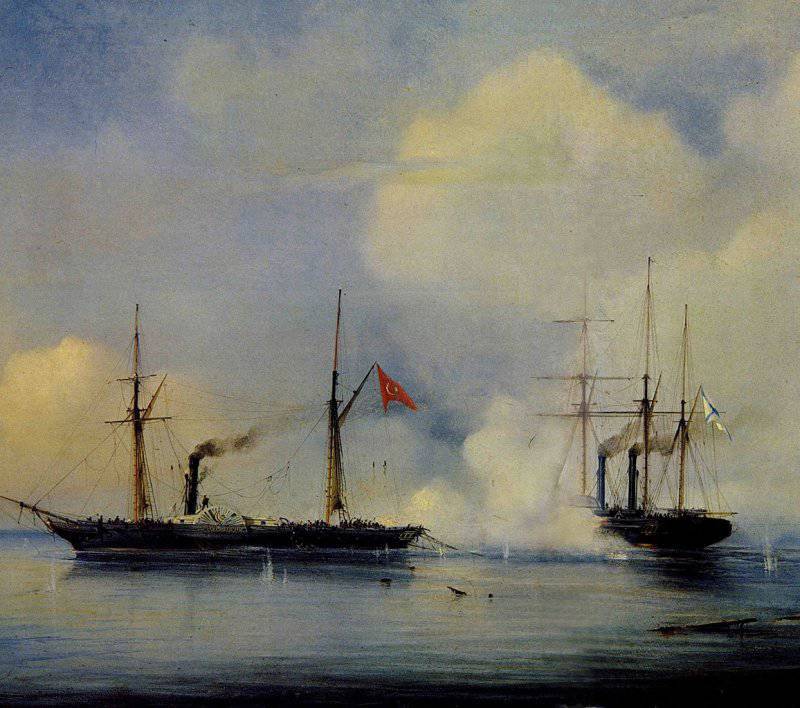
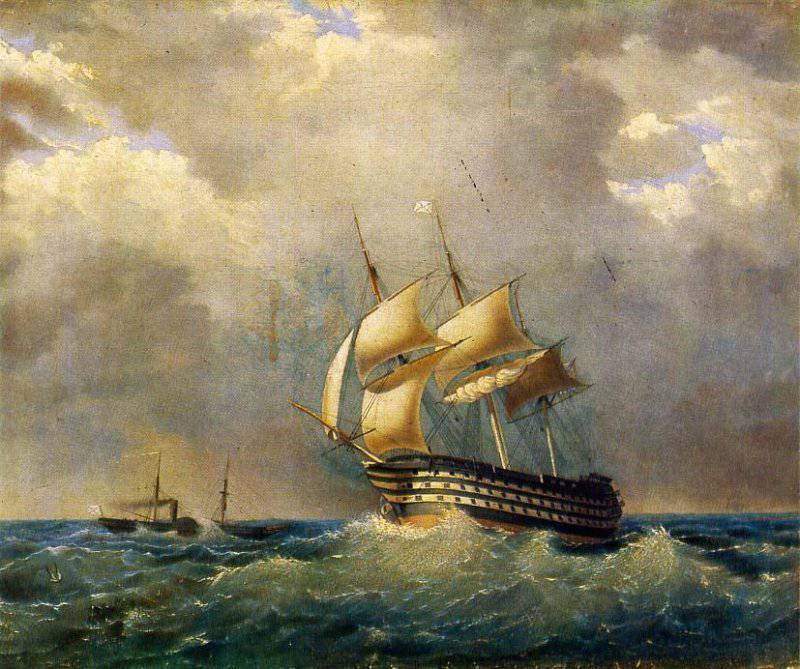
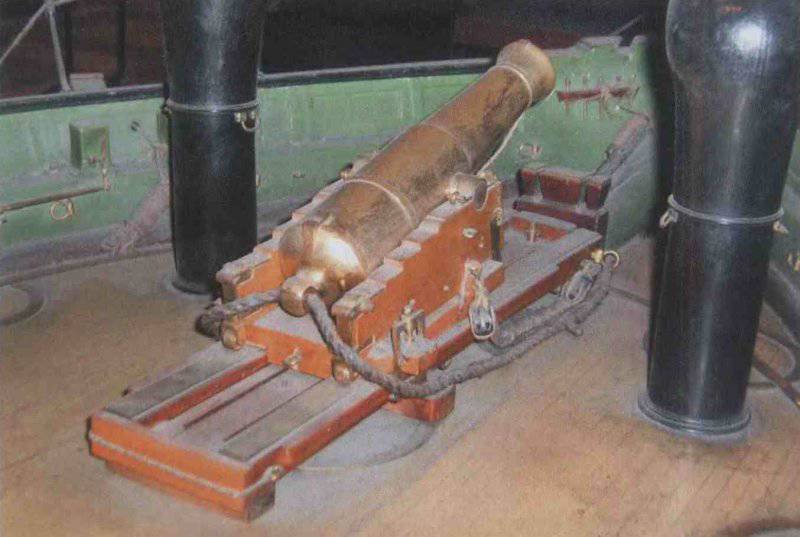
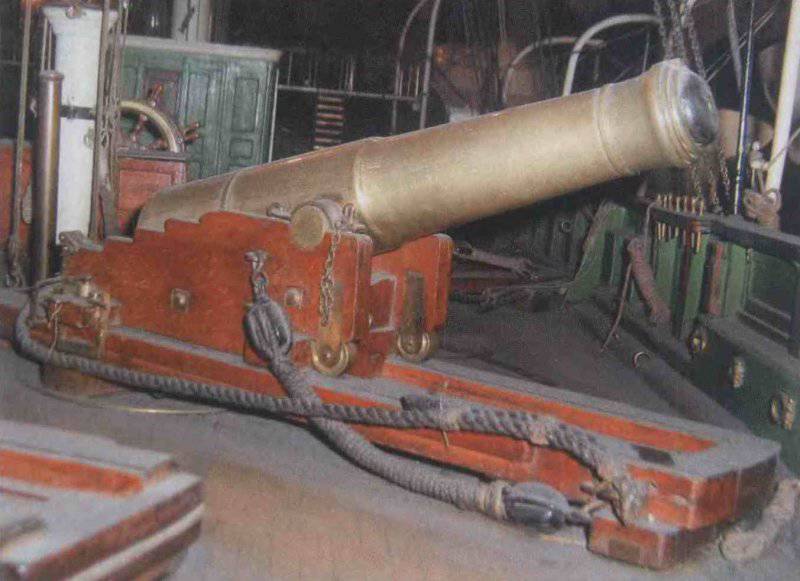
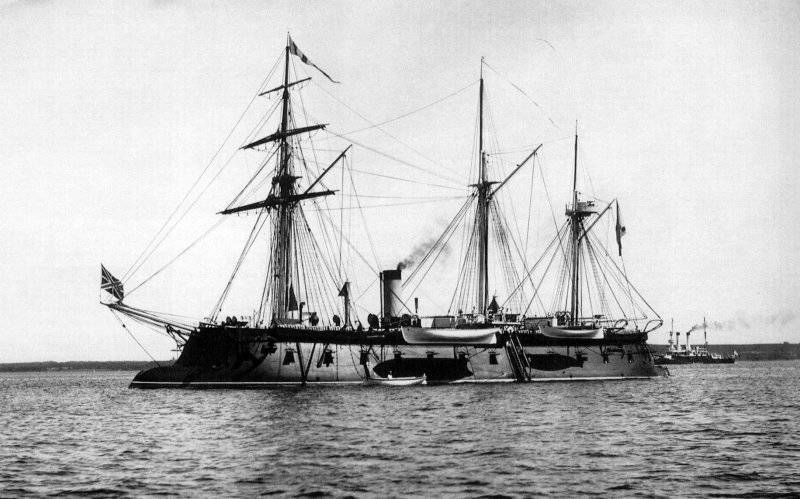
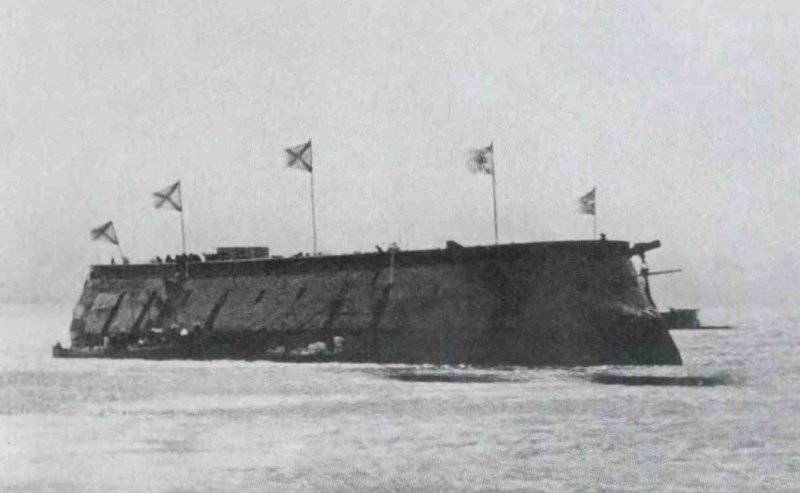
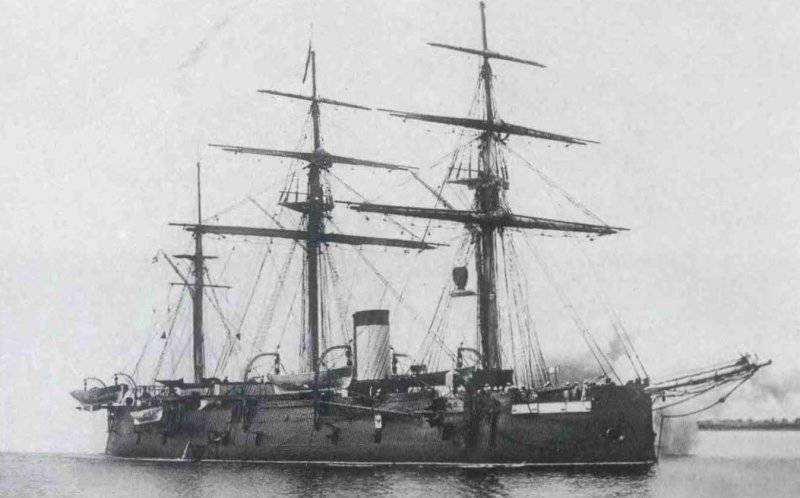
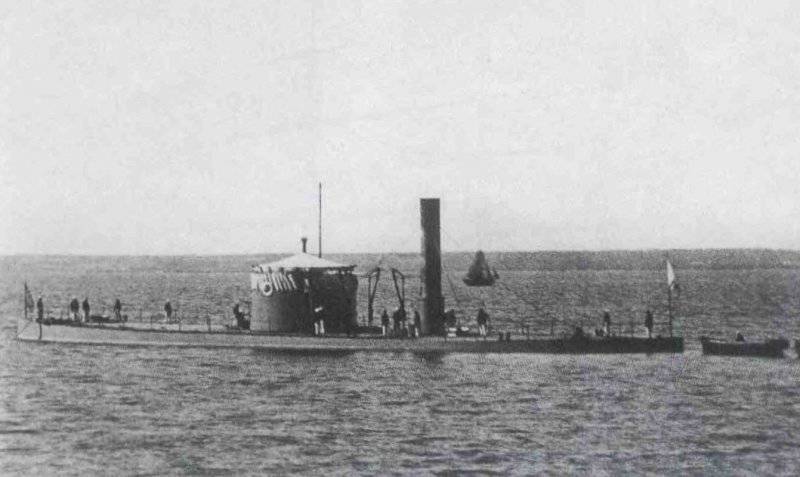
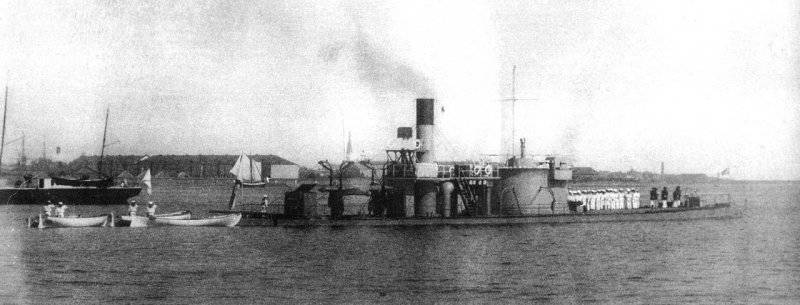
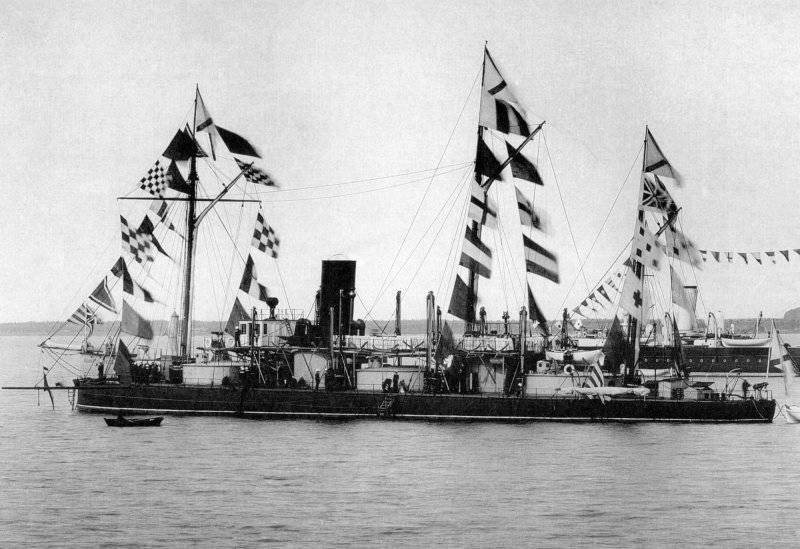
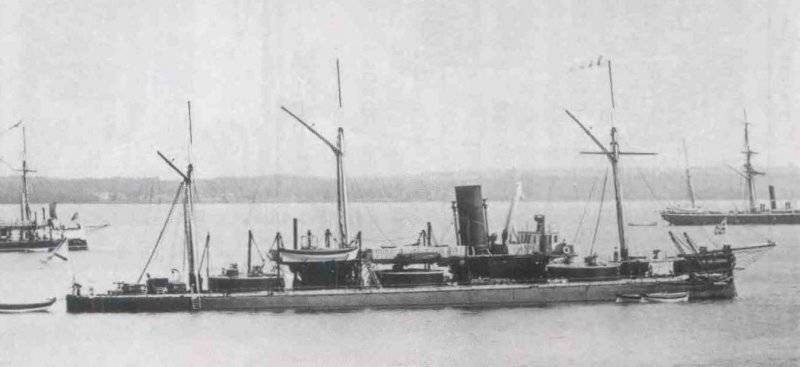
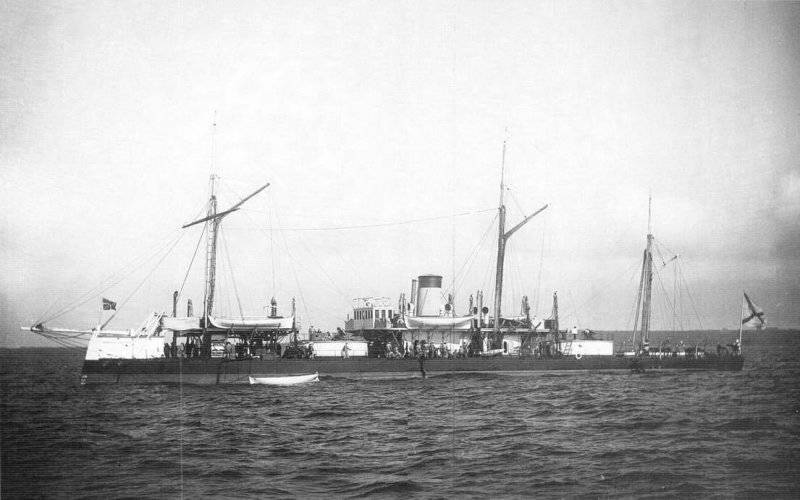
Information